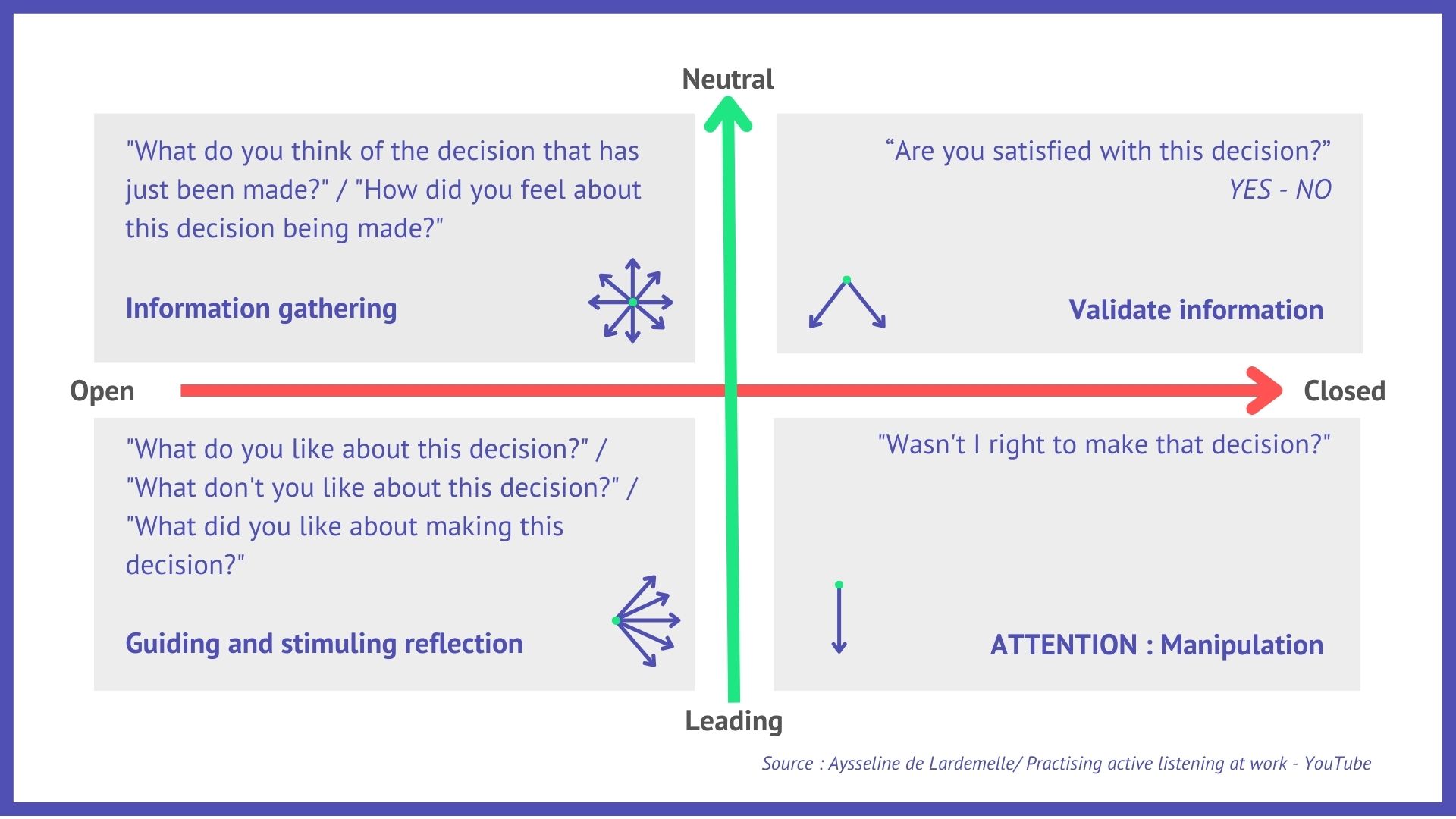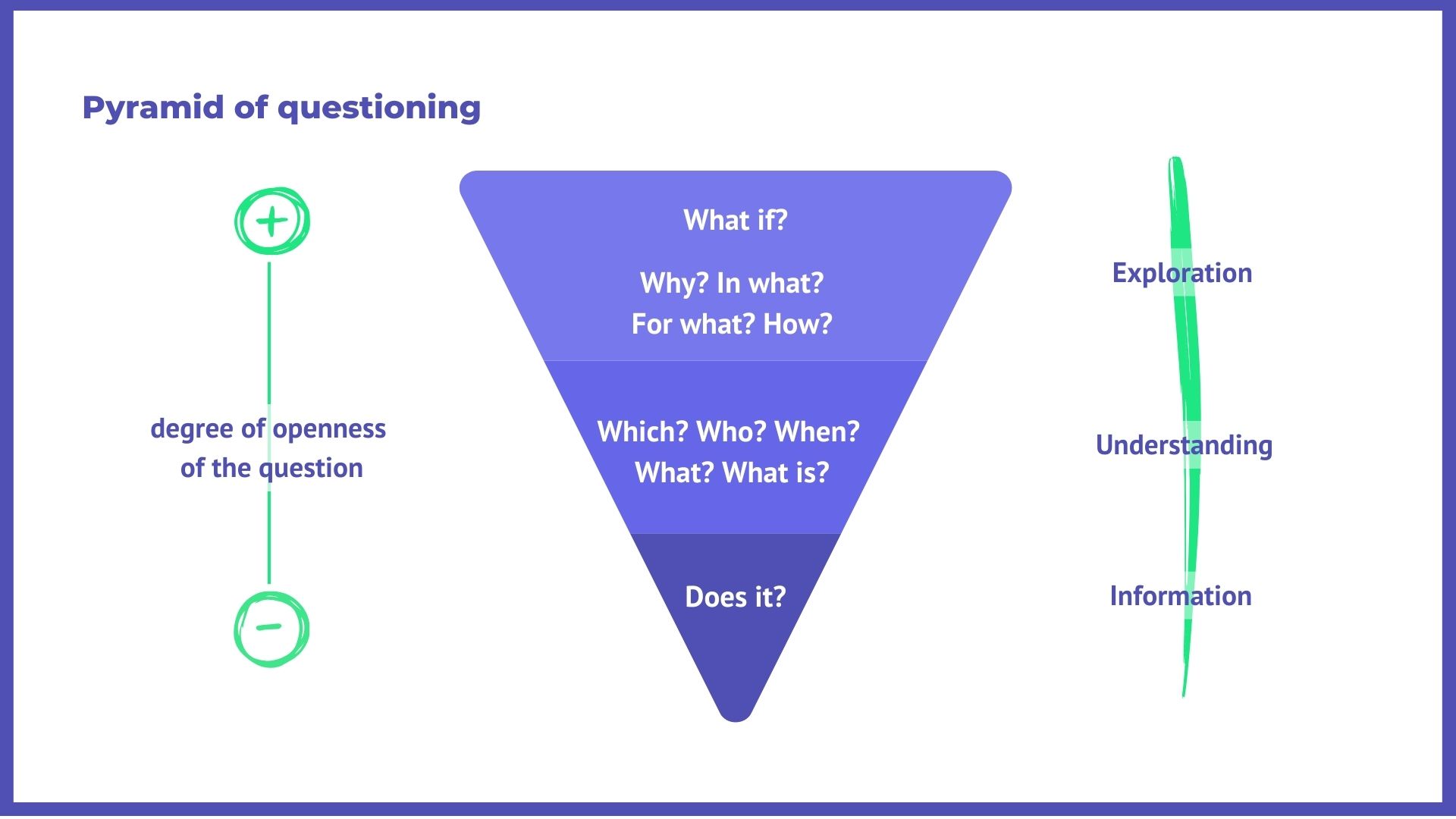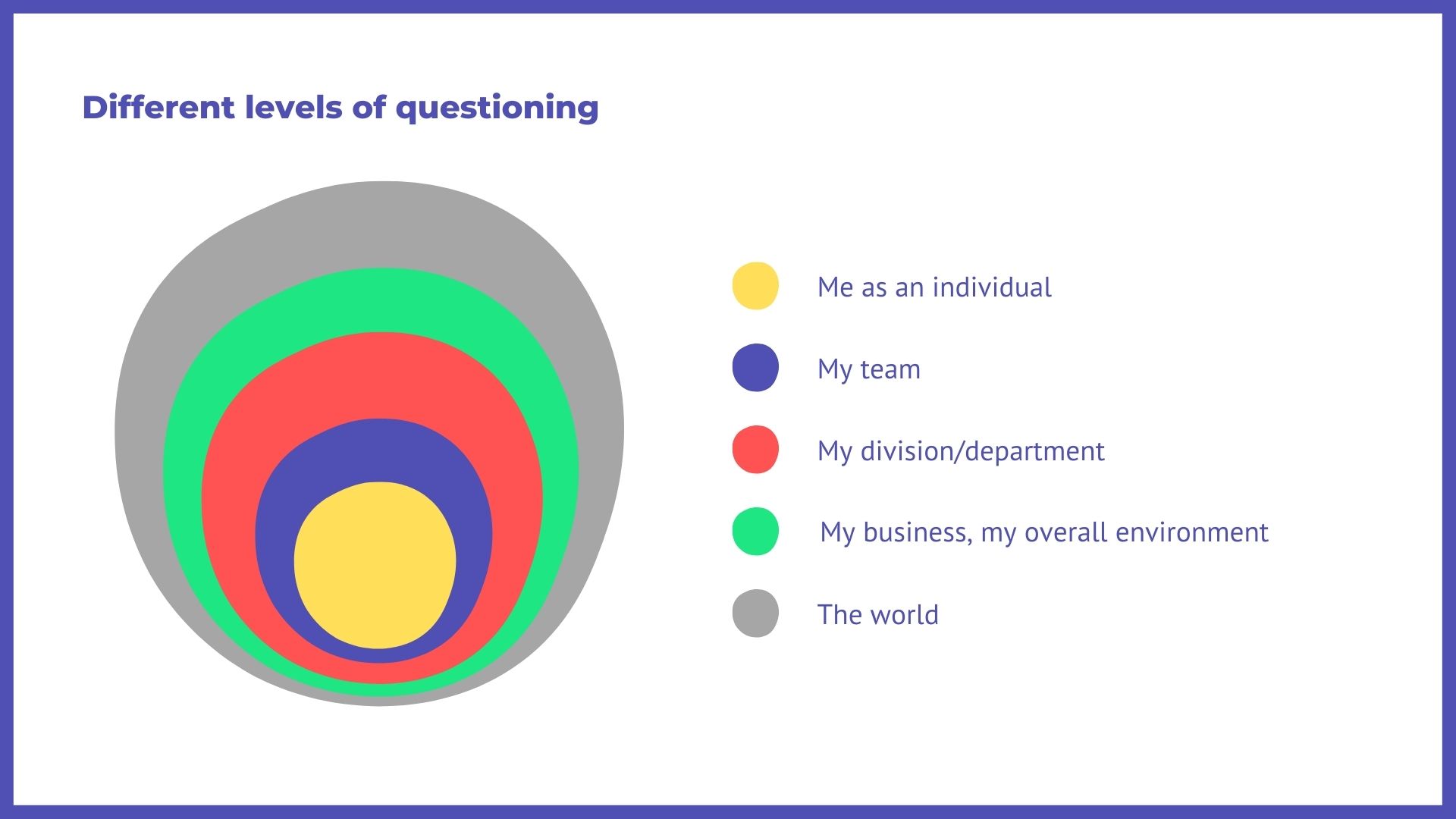To save colors and take care of the planet, print this text in shades of gray
The Art of Questioning
Asking the right questions to navigate complexity
Théorie
Introduction
The complexity of our environment requires new ways of working and thinking together. This is why it is important to question our practices and ask ourselves the right questions.
But to do so, it is essential to stop focusing so often on the answers and spend more time and energy identifying and formulating these questions. This is because the way a problem is posed influences its solution… Fortunately, this can be learned!
If I had an hour to solve a problem my life depended on, I would spend the first 55 minutes looking for the best question to ask myself, and when I found it I would only need 5 minutes to answer it.
Albert Einstein
Description
The art of questioning begins with asking‘what is a good question’?
In the context of questioning to bring a group of individuals together in collective intelligence, a good question is a “powerful” question and one that is adapted to the intention you have asked the group to work on.
How do you recognise a “powerful” question?
- specific and well understood by the participants;
- arouses curiosity, desire in the recipient;
- creates energy and gives impetus;
- encourages creativity and suggests new possibilities;
- leads to further questions and prompts reflection;
- touches on a deep meaning.
So how do you formulate these powerful questions?
Above all, it is important to be aware that some questions are
- open or closed
- neutral or leading

Regarding the level of openness of a question, you will choose to formulate an open-ended question if you are looking to stimulate reflections within a group;
On the neutral-leading axis of a question, there are no good or bad choices. The important thing is to be aware of the possible tendency of your question. More details in the “assumptions” section below.
Three aspects require special attention when formulating your question:
- Construction
This relates to the level of openness of the question.
To observe the construction, you can ask yourself:
Which interrogative pronoun am I using?

Example questions:
- “Why did you choose this training?” (open question)
- “Who referred you to this training?” (more closed question)
- Scope
This details the scope targeted in the question.
To observe the scope, you may ask yourself:
What is the scope of my question?

Example questions:
- *“How does this new product bring something positive to the world?”
- “How does this new product bring something positive to your team?”
- “How does this new product bring you something positive?”
- Possible responses
This aspect brings together the biases and points of view that the question contains.
To consider the possible answers, you may ask yourself:
What does my question imply?
Examples of questions relating to the same situation:
- “Who is the manager?” which implies that the important point is to find a wrongdoer versus “What feedback can we draw?” which implies that the important point is to identify the learnings
- “How can we fight competition?” versus “How could we make competition an opportunity?”
By inviting dialogue around key issues, leaders open up unprecedented opportunities to use collective intelligence to create new value propositions.
Based on Thomas J. Hurley and Juanita Brown, Systems Thinker, Nov.
2009
Examples of Application
The director of HP laboratories wanted to develop the group’s innovation and regularly asked employees the following question:
“What does it mean to be the best industrial research laboratory in the world?”.
Until an engineer suggested a question that seemed more inspiring:
“What does it mean to be the best industrial research laboratory for the world?”.
This simple change gave much more meaning to the action - moving from a competition-based approach to a service-based approach.
Source: after The Art of Asking Effective Questions, Eric E. Vogt, Juanita Brown and David Isaacs, 2003
Tips and Advice
- The art of questioning is particularly important in open forum, World Café and 6 hats because questioning is central to these methods.
- To find out more on the art of questioning, you can explore the concept of “questiology” by Frédéric Falisse in: his dedicated TedX.
- As Simon Sinek reminds us in this video with his golden circle, it is important to put meaning back at the heart of questioning